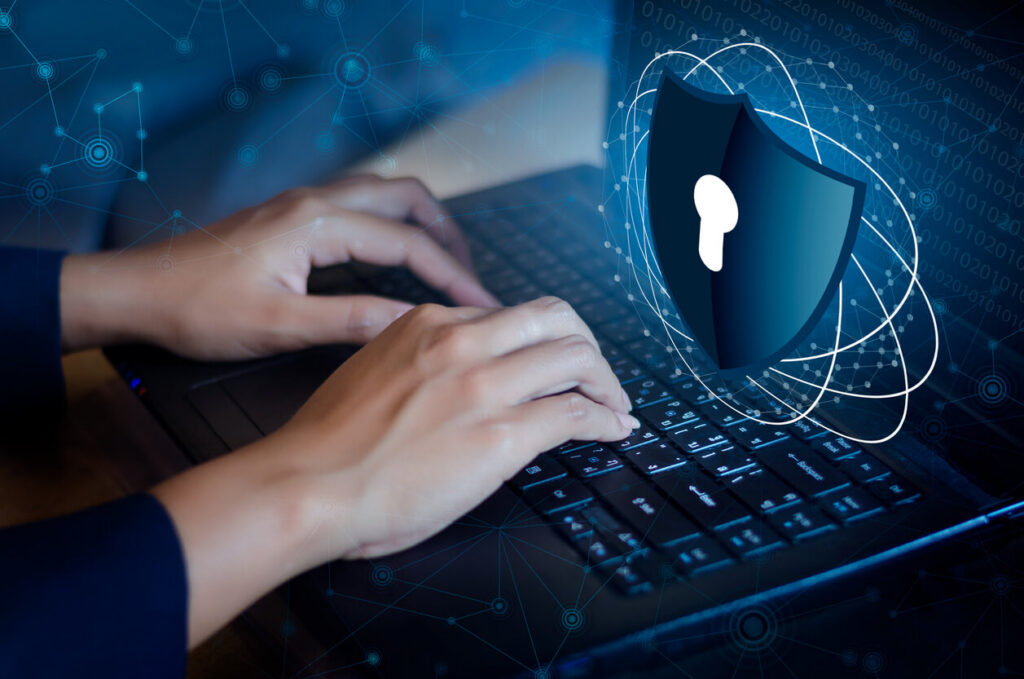
Staying ahead in cybersecurity is crucial for businesses and individuals alike, especially in this cybersecurity landscape of rapid advancements and shifts. We’re sounding off on what we’re seeing and what experts are reporting on in 2024. This includes the latest trends, new technologies, emerging threats, and the innovative and strategic approaches that we see shaping the industry.
1. The Rise of Artificial Intelligence (AI) in Cybersecurity
Artificial Intelligence (AI) has become a cornerstone of modern cybersecurity strategies. In 2024, AI is not just enhancing traditional security measures but also creating new paradigms for threat detection and response.
AI-Powered Threat Detection
AI and machine learning algorithms are now integral to identifying and mitigating threats. According to a 2024 report from Gartner, AI-powered threat detection systems are significantly improving the accuracy and speed of identifying potential cyber threats. These systems analyze vast amounts of data to detect anomalies and patterns that may indicate a security breach, allowing for quicker and more precise responses (Gartner, 2024).
Automation and Incident Response
AI is also playing a crucial role in automating incident response. The Forrester Research report of 2024 highlights how AI-driven automation is reducing the time needed to respond to and mitigate security incidents. Automated systems can quickly implement predefined responses to known threats, thereby minimizing the impact on business operations (Forrester, 2024).
Adversarial AI
However, the rise of AI also brings new challenges. McKinsey & Company notes that adversarial AI —where attackers use AI to craft sophisticated attacks — is becoming a significant concern. This trend requires cybersecurity professionals to develop advanced countermeasures to address these evolving threats (McKinsey & Company, 2024).
2. The Growing Importance of Zero Trust Architecture
Zero Trust Architecture (ZTA) is rapidly gaining traction as a fundamental security model. The principle behind Zero Trust is simple: never trust, always verify. In 2024, the adoption of Zero Trust is becoming more prevalent as organizations seek to protect their networks from increasingly sophisticated threats.
Zero Trust Adoption Surge
A recent study by IDC revealed that the adoption of Zero Trust Architecture has surged, with more than 50% of enterprises implementing or planning to implement ZTA by the end of 2024 (IDC, 2024). This approach involves continuous verification of user identities, device health, and access privileges, regardless of whether the user is inside or outside the corporate network.
Integration with Cloud Services
As organizations increasingly migrate to the cloud, Zero Trust principles are being integrated with cloud security models. SANS Institute reports that combining Zero Trust with cloud security solutions enhances protection by ensuring that access to cloud resources is tightly controlled and monitored (SANS Institute, 2024).
Challenges and Implementation
While Zero Trust offers robust security benefits, its implementation can be complex. CIO Magazine highlights that many organizations face challenges in deploying Zero Trust due to legacy systems and the need for a comprehensive strategy that aligns with existing IT infrastructure (CIO Magazine, 2024).
3. The Evolution of Ransomware Attacks
Ransomware attacks continue to evolve, becoming more sophisticated and damaging. So far in 2024, ransomware is not just a financial threat but also a strategic weapon used by cybercriminals.
Ransomware-as-a-Service
A troubling trend is the rise of Ransomware-as-a-Service (RaaS), where ransomware developers offer their tools and services to other criminals. Symantec reports that this model has made it easier for less technically skilled attackers to execute ransomware attacks, increasing the frequency and severity of incidents (Symantec, 2024).
Targeting Critical Infrastructure
Ransomware attacks are increasingly targeting critical infrastructure sectors, such as healthcare and utilities. Kaspersky highlights a significant uptick in attacks against essential services, leading to disruptions that can have far-reaching consequences (Kaspersky, 2024).
Evolving Ransomware Tactics
Cybercriminals are also employing more sophisticated tactics, such as double extortion, where they not only encrypt data but also threaten to release it publicly if the ransom is not paid. CrowdStrike notes that this tactic increases pressure on organizations to pay the ransom, further incentivizing these attacks (CrowdStrike, 2024).
4. Enhanced Privacy Measures and Regulations
With growing concerns over data privacy, regulatory frameworks are becoming more stringent to protect personal information. In 2024, privacy regulations are playing a crucial role in shaping cybersecurity practices.
Global Privacy Regulations
New privacy regulations, such as the General Data Protection Regulation (GDPR) in Europe and the California Consumer Privacy Act (CCPA) in the U.S., are being updated to address emerging privacy concerns. Privacy International provides an overview of recent regulatory changes and their impact on businesses (Privacy International, 2024).
Data Protection Technologies
To comply with these regulations, organizations are investing in advanced data protection technologies, such as data loss prevention (DLP) and encryption. TechCrunch highlights how these technologies are being integrated into cybersecurity strategies to ensure compliance and protect sensitive information (TechCrunch, 2024).
Privacy by Design
The concept of “Privacy by Design” is gaining prominence, where privacy considerations are integrated into the development of products and services from the outset. The Verge discusses how adopting this approach can help organizations build trust with customers and ensure better data protection (The Verge, 2024).
Conclusion
The cybersecurity landscape in 2024 is marked by rapid technological advancements and evolving threats. From the integration of AI and Zero Trust Architecture to the emerging challenges posed by ransomware, staying informed and proactive is essential for maintaining robust security. By embracing the latest trends and technologies, organizations can better protect themselves against the ever-changing threat landscape and ensure their cybersecurity measures are up to date. As we continue to navigate these changes, ongoing education and adaptation will be key to staying ahead of cyber threats and safeguarding our digital future.